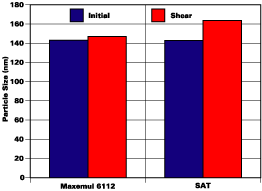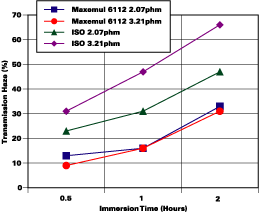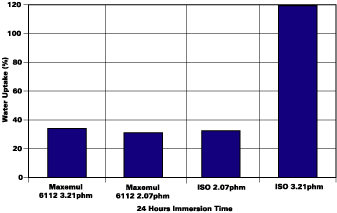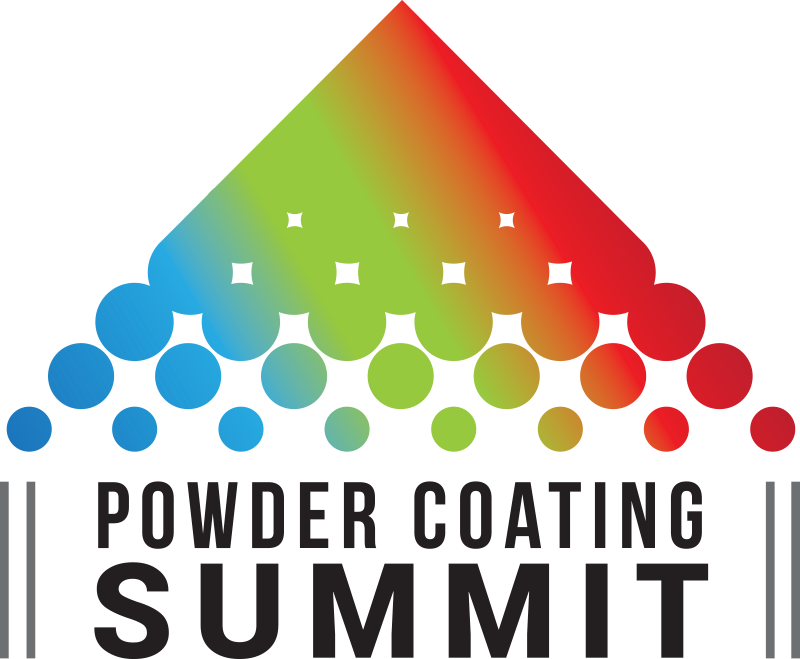Anionic Products Boost NMS Application

Today, solventborne formulations remain an important fraction of the industrial coatings market. This is due to the high performance requirements needed in more demanding applications that conventional heterogeneous polymer systems cannot meet. These include less efficient barrier properties, dry films that are more water sensitive and issues with the appearance of the film. Typical aesthetic problems associated with waterborne coating systems are lower gloss and higher tendency to dirt pick up.
Increasingly, legislation is forcing coatings manufacturers to reformulate their remaining solventborne coatings. The environmental arguments against solvent use are growing. Evidence suggests that some solvents can catalyze ground level ozone formation, exposure to others can lead to chronic disease, and there are the risks and cost involved with handling, transport and storage of these typically highly flammable liquids. However, to truly drive change, manufacturers need waterborne systems that can provide the product performance that they have expected from solvent systems.

Waterborne Coatings with Solventborne Performance
One technology that can boost the performance of waterborne systems is the use of non-migratory surfactants (NMS). The concept of using NMS is already a few years old. These irreversibly anchored surfactants can produce emulsion latices with superior colloidal stability. Dry films with better water repellency are formed because hydrophilic domain formation, in the bulk of the film or at its surface, is avoided. In the article "Non-Migratory Surfactants: A New Tool for Emulsion Polymerization" (PCI March 2001), the issues around the use of conventional surfactants in emulsion polymerization were discussed and the properties and benefits of a new range of nonionic NMS from Uniqema were demonstrated, together with their application in a number of coating sectors. The Maxemul(tm) range of surfactants has now been augmented by anionic products. This article describes the chemical nature of the Maxemul NMS surfactants and gives application data from model coating and adhesive formulations for the new anionic products.
Balanced Chemistry
The anionic Maxemul NMS is a phosphate ester functional modified alcohol ethoxylate with water solubility controlled by variation of the ethoxylate (EO) chain length of the hydrophilic portion of the surfactant. The product described in this work (Maxemul 6112) is water-soluble in the acid form. The nonionic Maxemul NMS is an alkenyl functional ethoxylate molecule.Both chemistries have a structure with the unsaturated (or reactive) part between hydrophobe and hydrophile located at the particle interface following adsorption. This makes the surfactant readily accessible for copolymerization. The presence of reactive hydrogen around the unsaturation also allows the possibility of grafting via chain transfer.
NMS is capable of straight replacement of conventional surfactants in most processes, however extensive application testing is necessary to ensure that all potential issues have been addressed. This means that the introduction of new technology, such as NMS, does not happen overnight and initially focuses on application sectors where the new product can add high value. For NMS these sectors include automotive, interior wood, and external metal coatings, and various adhesive applications.
Model formulations have been used to demonstrate the added value that can be obtained by using NMS technology.

Acrylic Coatings
Protective films with improved aesthetic properties including higher gloss and a reduced tendency to whiten (bloom) in humid conditions can be demonstrated using NMS.A model acrylic terpolymer coating formulation was used to compare the performance of an anionic NMS (Maxemul 6112) with two conventional phosphate ester anionic surfactants: a saturated equivalent (designated 'sat') and an isobranched alternative (designated 'iso'). The model polymer was synthesized in a seeded semi-continuous polymerization process and with a butyl acrylate/ methyl methacrylate/ methacrylic acid ratio of 48.8:49.9:1.3. The 'sat' surfactant has a fully saturated hydrophobe with an equivalent hydrocarbon chain length to the Maxemul 6112. This product is not expected to affect reaction kinetics. The second 'iso' surfactant is a commercially available alcohol ether phosphate with a hydrophobe containing isobranching. Abstraction of a labile hydrogen at the branch causes chain transfer reactions, lower molecular weights, but also some chemical grafting of the surfactant.
Initially the ability of NMS to give improved colloidal stability was investigated. Figure 1 shows the effect of shear on average particle size, as measured by dynamic laser light scattering, for two latices both neutralized to pH 9. One latex is made with Maxemul 6112 and the other with the conventional 'sat' surfactant and both were subjected to shearing at 3,000 rpm for 15 minutes. It can be seen that the anionic NMS is more efficient for particle stabilization at equal surfactant concentration (by weight) showing no appreciable increase in particle size after shearing unlike the conventional formulation. In addition the latex formulated with Maxemul can also resist five freeze/thaw cycles down to -20?C showing improved storage stability. The thawed NMS latex was shown to be free of any signs of coagulation.

A practical demonstration of the effect of Maxemul's superior performance is shown in Figure 3 where the appearance of the dry film formulated with NMS after one week of immersion in water is compared with that of the conventional formulation after one day - there is a 'Q' under the conventional film! The NMS formulated film also shows superior gloss retention. Similar results have also been obtained for nonionic NMS formulations in polyvinyl acetate co-polymer systems.

Sticky Applications
Pressure sensitive adhesives (PSA) are film-forming, high molecular weight materials that stick firmly to surfaces with only slight pressure. Two major markets for PSAs are adhesive tape and label stock. A high proportion of PSAs, especially for tape, are solventborne formulations, which offer excellent performance characteristics but are coming under pressure from environmental legislation. Current waterborne PSA formulations have good emission and manufacturability characteristics (e.g., quick run-through), but have generally lower performance characteristics. R&D is an important driving force in the continued growth of the PSA market and the use of NMS has been investigated in a model formulation.
With conventional surfactants, surfactant aggregation at the polymer surface can affect adhesive properties such as tack. Inverse micelles and microvoids within the film can also occur when using conventional surfactants resulting in lower cohesive strength. The model adhesive formulation used in this work was a butyl acrylate rich (88%) acrylic polymer produced using seeded semi-continuous polymerization. An anionic NMS (Maxemul 6112) was compared with two conventional anionic surfactants: a conventional iso-branched phosphate ester (designated iso) and an allylic nonylphenolethersulphate (designated All-NPES).

Figure 5 compares the tack properties of these formulations in a rolling ball test using a 7mm diameter ball on a glass substrate. All films were conditioned for 24 hours at 40?C prior to test. The NMS formulation again shows higher tack values at lower film thickness.
Tests were also conducted to demonstrate the water resistance of the Maxemul model PSA formulations (see Figure 6). Results showed improved performance for NMS formulations with reduced, slower whitening, as measured by transmission haze, in comparison to conventional surfactant formulations following immersion of the dry adhesive film in water. The results for the NMS formulations appear to be independent of surfactant concentration.
These results are confirmed when the extent of water uptake in the adhesive films is measured after 24 hours' immersion (see Figure 7). Water uptake is seen to be independent of surfactant concentration for Maxemul; in comparison, the adhesive films made with conventional surfactant can increase weight by up to 120% due to water uptake.
Further testing on a range of industrial applications using NMS model formulations is ongoing.

NMS Benefits
The use of NMS technology can bring improved performance to waterborne formulations in many high-value applications. Benefits include superior colloidal performance in all applications and improved water repellency in coatings. In adhesive applications, use of the NMS technology shows improved tack and shear strength.Maxemul and Uniqema are trademarks of the ICI Group of Companies
For more information on non-migratory surfactants, contact Dan Howe, Uniqema Performance Technologies, Uniqema, 1000 Uniqema Boulevard, New Castle, DE 19720-2790; phone 302/574.1646; e-mail dan.howe@uniqema.com; or Circle Number 134.
Looking for a reprint of this article?
From high-res PDFs to custom plaques, order your copy today!




